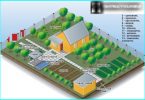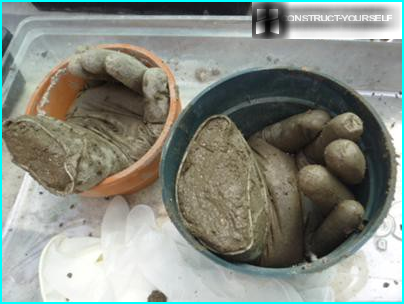
A hundred years ago, the assertion that a rich harvest can be obtained only on fertile soil was considered axiomatic. Modern technologies of cultivation based on the use of soil instead of the special foundations allow you to create more favorable conditions for cultivation of any crop. Hydroponics is one of the areas of cultivation, all the nutrients which they receive by means of special solutions. This technology is widely used in greenhouses in many countries. Hydroponics their hands – the opportunity to create at home lush flower gardens, as well as quickly to rich and environmentally friendly crop.
The contents
The benefits of growing hydroponically
Among the main advantages of hydroponics over other technologies of cultivation can be distinguished:
- Minimal complexity. Since in this approach the plants grow without recourse to the soil, care for crops confined to testing for the presence in containers of water and removal of dead stems and roots. Making a homemade hydroponics, you get rid of problems such as removing weeds, loosening the soil and the struggle against harmful insects. When transplanting perennial plants eliminates the need to clean the roots from the old depleted soil, thereby damaging them. It is sufficient to transfer the plant to a bigger tank, pour the new substrate.
- Space saving. To create optimal conditions and maintain the viability of the roots nasazhdenii will require a minimum of space. To grow hydroponics on a windowsill or in a conventional greenhouse.
- High yields and environmental friendliness. Thanks to simple in execution, but quite effective technology, the roots of the flowers are supplied with all the necessary nutrients. Culture grown in hydroponics has sredneroslye, but a strong root system and a well developed aerial part. This allows you to collect higher yields than when grown in soil. Growing plants do not accumulate harmful substances which are often present in soil: heavy metals, radionuclides, and organic toxic compounds.
Plants grown in hydroponics are no different from their counterparts grown in soil, no taste, no aromatic qualities. They differ only in the greater intensity of vegetation and higher amounts of fruiting.
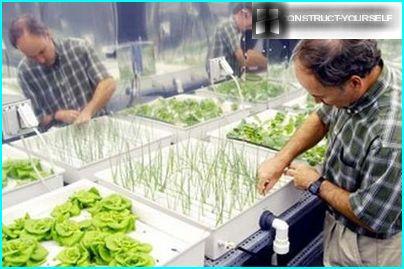
As a nutrient medium for the distillation plant may be: water (hydroponics), substrate (soil mix), air (aeroponika)
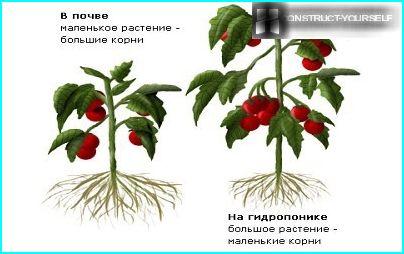
Hydroponics is widely used for the distillation of flowers and vegetable seedlings before selling
Hydroponic substrates and nutrient solutions
For the arrangement of hydroponic systems use solutions, composed of all the necessary minerals and nutrients. Key among them: phosphorus (accelerating growth and improving flowering), potassium (promotes color intensity of flowers and maturation of the shoots), calcium and magnesium (stimulating the development of root system) and other components required to build a plant organism.
Often, as a nutrient medium in the regeneration hydroponics for flowers are special formulations, a characteristic feature of which is a sufficient porosity and a high blagovechensky.
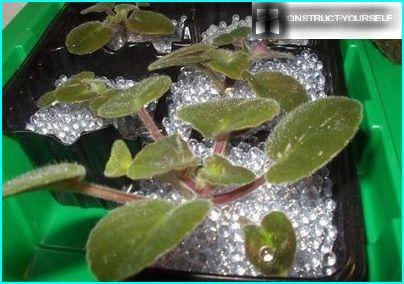
Balanced nutrient solutions, the components which are optimal ratios, can be purchased in gardening stores
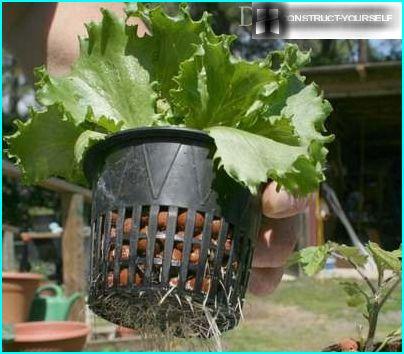
Based hydroponic substrates are: moss, PAA-gels, gravel, expanded clay, mineral wool, and other leavening agents (vermiculite, perlite)
Manufacturer of hydroponic systems
For arranging a hassle-free wegapitiya plants at home, you can use a simple hydroponic setup, collect which could be anyone.
For production installation, you need to prepare:
- Aquarium air compressor;
- Plastic container;
- The sheet of foam.
The bottom and walls of the container must be made of an opaque plastic that blocks out the sun’s rays. Tank made of translucent plastic, you should shade under the outer wall of the food with foil or a dark color paint.
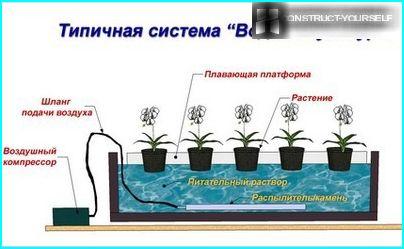
Pots with plants will be placed on the foam sheet that covers a plastic container, filled about one third with a special solution
A foam sheet should be cut holes to accommodate cups with plants. Holes should be made at the same distance, so as the growth of neighboring plants do not interfere with each other.
Pots under the plant can be made of usual plastic cups, punctures in the bottom and walls products are small holes. Thanks to the many holes nutrient substrate will be constantly moist.
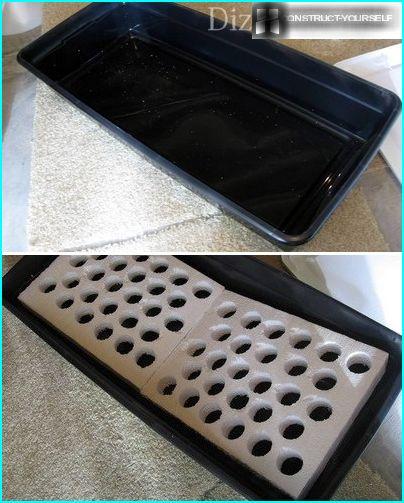
The size of the holes should be slightly smaller than the diameter of the upper part of the pots, so they don’t fail completely, but only slightly «sank»
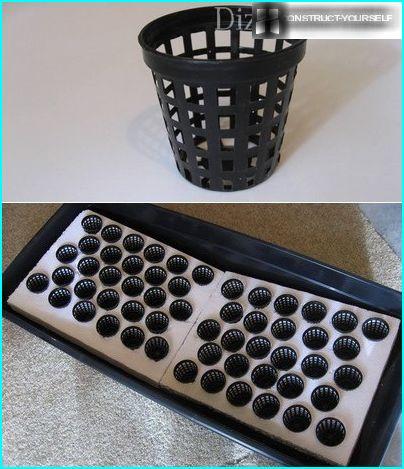
You can buy ready-made planting containers, resembling miniature plastic baskets
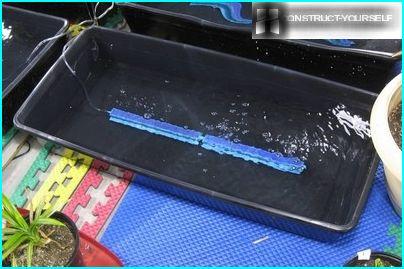
As the root system of plants especially in need of oxygen, when building a hydroponics aquarium use air compressor
For a uniform distribution of the liquid can be further on the bottom of the tank to place the spray – aquarium rocks.
The unit is ready for operation. Left to fill the cups with substrate and planted plants in them.
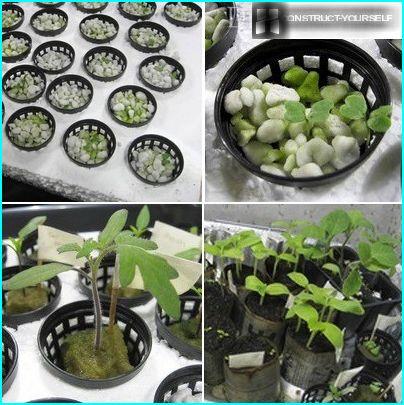
The container is filled with a nourishing liquid to a third of the pots were immersed in the solution. Further care is to add fluid to the proper level, and monthly update of the solution.
The options for making a hydroponic setup:






